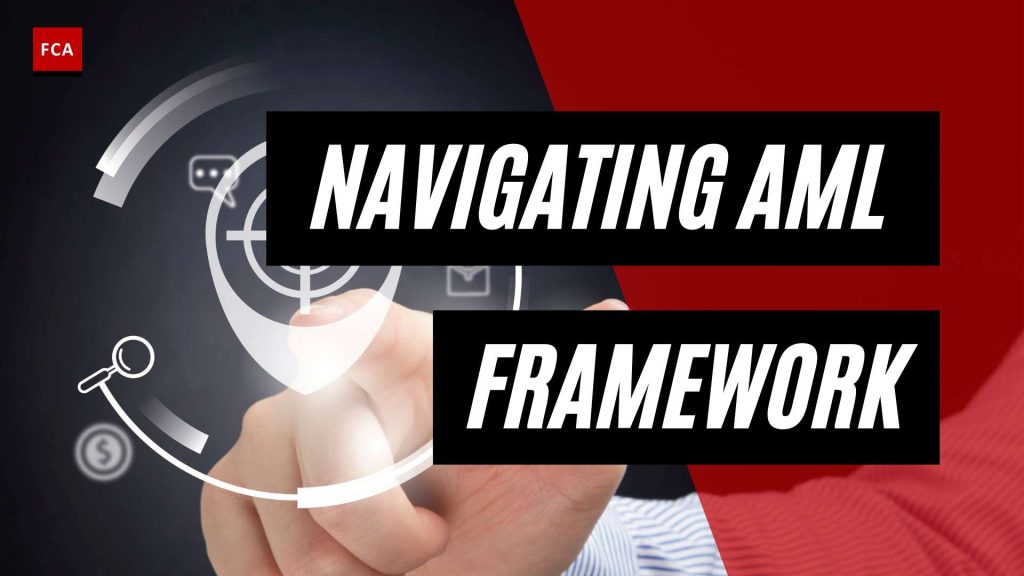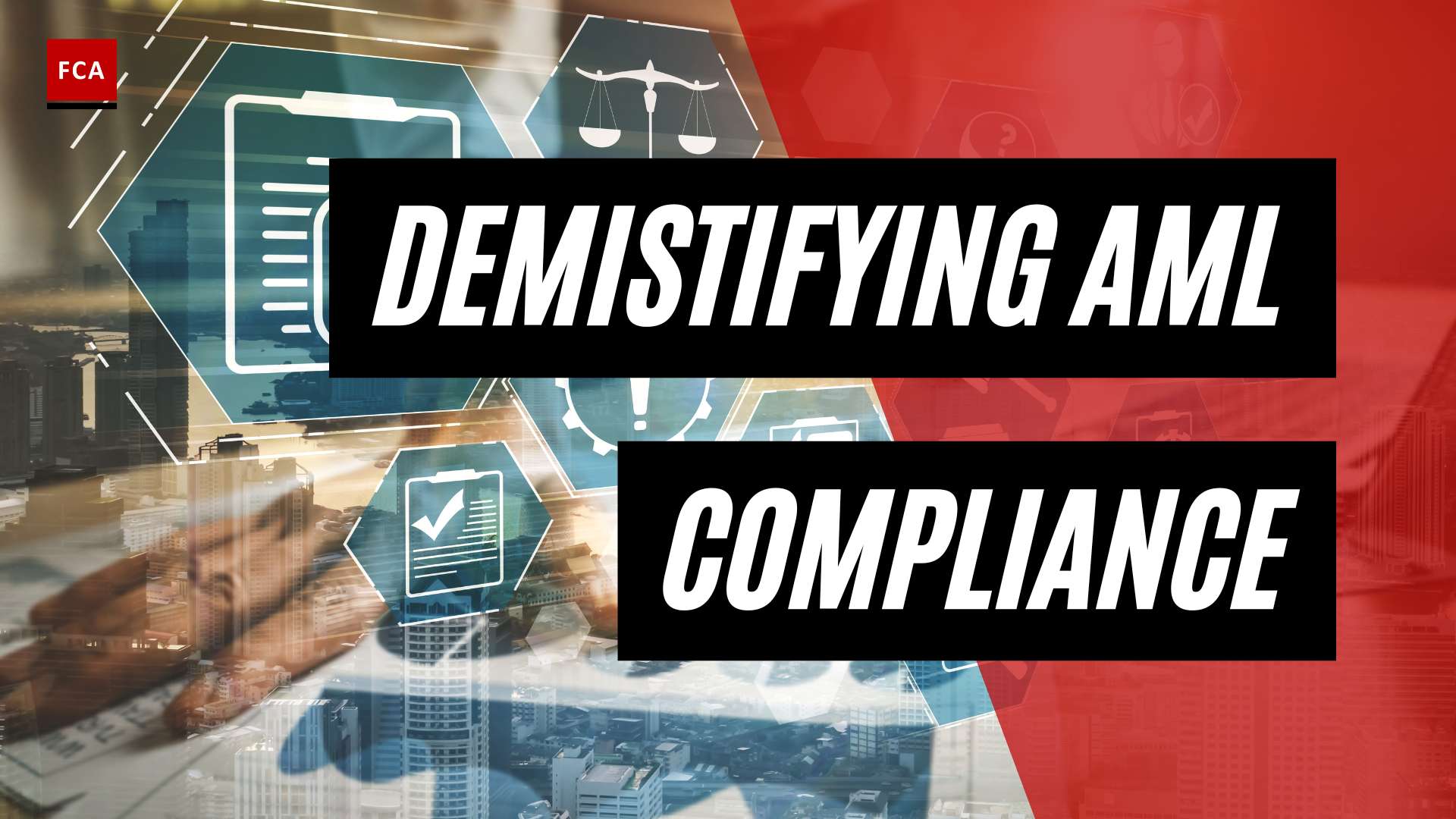Understanding AML Reporting Obligations
To combat money laundering and terrorist financing activities, organizations are required to adhere to Anti-Money Laundering (AML) reporting obligations. These obligations involve implementing comprehensive AML compliance programs, following international standards, and working in accordance with regulatory frameworks.
Overview of AML Compliance Programs
AML compliance programs are a set of rules and procedures designed to prevent and detect money laundering and terrorist financing activities. Financial institutions worldwide, including banks and other regulated entities, must establish robust AML compliance programs to safeguard the integrity of the financial system. Key legislative acts governing AML compliance programs include the Bank Secrecy Act in the United States and the Fourth and Fifth Anti-Money Laundering Directives in the European Union (Flagright).
These programs focus on detecting and reporting suspicious activities by implementing effective internal detection systems, conducting risk assessments of customers, and fostering a culture of compliance at all organizational levels. They also encompass independent audits, comprehensive policies and procedures, and ongoing monitoring to ensure compliance with regulatory requirements.
The Bank of Canada’s AML Framework
The Bank of Canada has established an Anti-Money Laundering and Anti-Terrorist Financing Controls Framework to combat money laundering and terrorist financing activities. This framework reflects the bank’s commitment to maintaining integrity and protecting the financial system (Bank of Canada). It consists of the organization’s Anti-Money Laundering (AML) Program and Anti-Terrorist Financing (ATF) Program.
The Bank of Canada’s AML and ATF framework aligns with international standards and regulations to ensure that the organization plays a significant role in safeguarding the integrity of the financial system and preventing illegal activities. By adhering to this framework, financial institutions contribute to the collective effort of combating money laundering and terrorist financing.
International Standards for AML Reporting
International standards have been established to guide AML reporting and ensure consistency in combating money laundering and terrorist financing globally. Organizations and regulators adhere to these standards to create a unified approach to AML reporting.
Key international standards for AML reporting include guidelines and recommendations from organizations such as the Financial Action Task Force (FATF), an intergovernmental body that sets standards and promotes effective implementation of legal, regulatory, and operational measures to combat money laundering and terrorist financing. These standards provide a comprehensive framework for AML reporting, covering areas such as customer due diligence, suspicious transaction reporting, and information sharing among financial institutions.
By following international standards for AML reporting, organizations demonstrate their commitment to combating financial crimes and contribute to the collective effort of safeguarding the integrity of the global financial system.
Understanding the obligations and requirements of the AML reporting framework is essential for professionals working in compliance, risk management, anti-money laundering, and anti-financial crime roles. By staying informed and implementing effective AML compliance programs, organizations can play a vital role in detecting and deterring financial crimes, safeguarding the financial system, and maximizing effectiveness through modernization.
Key Components of AML Reporting Framework
When it comes to combating money laundering and terrorist financing activities, an effective AML reporting framework is essential. This framework consists of several key components that work together to ensure compliance with regulatory requirements and mitigate financial crime risks. Let’s explore these components in more detail.
Risk Assessments and Internal Controls
Risk assessments and internal controls are fundamental elements of an AML reporting framework. Financial institutions worldwide are required to develop and implement AML compliance programs to prevent and detect money laundering and terrorist financing activities. These programs involve conducting risk assessments to identify and assess the potential risks associated with customers and transactions.
Through risk assessments, organizations can evaluate the likelihood and impact of money laundering and terrorist financing risks. This information then helps in implementing appropriate internal controls to mitigate those risks effectively. Internal controls can include policies, procedures, and systems that enhance due diligence, customer identification, and transaction monitoring processes.
Designated Compliance Officers
Designating compliance officers is crucial for the successful implementation of an AML reporting framework. These individuals are responsible for overseeing and coordinating the organization’s AML compliance efforts. Compliance officers ensure that the necessary policies, procedures, and controls are in place to detect and report suspicious activities.
Compliance officers also serve as a point of contact for regulators and law enforcement agencies, facilitating effective communication and cooperation. They stay updated on regulatory developments and industry best practices, ensuring that the organization’s AML program remains current and robust.
Training Programs and Ongoing Monitoring
Training programs and ongoing monitoring are vital components of an AML reporting framework. Training programs educate employees about their roles and responsibilities in detecting and reporting suspicious activities. These programs cover topics such as customer due diligence, transaction monitoring, and recognizing red flags of money laundering and terrorist financing.
Ongoing monitoring involves the regular review and assessment of customer accounts and transactions to identify any unusual or suspicious patterns. By implementing effective monitoring systems, organizations can promptly detect and investigate potentially illicit activities. Regular training and monitoring help maintain a culture of compliance within the organization.
By incorporating these key components into an AML reporting framework, organizations can strengthen their ability to detect and report suspicious activities, mitigate financial crime risks, and safeguard the integrity of the financial system.
To learn more about AML reporting obligations and explore AML reporting software and tools, visit our AML Reporting Obligations page.
Leveraging Technology in AML Reporting
In order to enhance the effectiveness of the Anti-Money Laundering (AML) reporting framework, leveraging technology is crucial. By integrating technology and data analytics, compliance professionals can improve their ability to detect and prevent financial crimes. In this section, we will explore three key areas where technology plays a significant role in AML reporting: enhancing compliance and risk assessment, advanced analytics and machine learning, and collaboration among stakeholders.
Enhancing Compliance and Risk Assessment
Technology has revolutionized the way AML compliance is conducted by providing tools and systems that streamline reporting obligations. AML reporting software and systems enable financial institutions to automate data collection, analysis, and reporting processes. These tools help in identifying suspicious transactions, monitoring customer behavior, and ensuring compliance with regulatory requirements.
By implementing robust AML reporting software, financial institutions can enhance their risk assessment capabilities. These systems allow for the integration of various data sources, including transactional data, customer information, and external data feeds. This integration provides a comprehensive view of customer activity and helps in identifying potential red flags for money laundering and other illicit activities.
Advanced Analytics and Machine Learning
The use of advanced analytics and machine learning algorithms is becoming increasingly important in AML reporting. These technologies enable financial institutions to analyze large volumes of data quickly and accurately, identifying patterns and anomalies that human analysts may overlook. By leveraging these technologies, institutions can enhance their ability to detect suspicious activities and potential money laundering risks.
Machine learning algorithms can be trained to recognize patterns of normal and abnormal behavior based on historical data. This allows financial institutions to establish sophisticated models for detecting and identifying potential money laundering activities. By continuously learning and adapting to new trends, machine learning algorithms improve over time, enhancing the effectiveness of AML reporting.
Collaboration Among Stakeholders
Effective collaboration among stakeholders is a critical component of the AML reporting framework. Technology plays a vital role in facilitating this collaboration by enabling secure information sharing and communication among financial institutions, regulators, law enforcement agencies, and intelligence organizations.
Through secure platforms and information-sharing systems, stakeholders can exchange relevant data and intelligence to enhance their collective efforts in combating money laundering and other financial crimes. By sharing insights and collaborating on investigations, stakeholders can identify and address emerging risks more effectively.
The integration of technology, advanced analytics, and collaboration platforms strengthens the overall AML reporting framework, improving the detection and prevention of financial crimes. However, it is important to ensure that these technologies are implemented in compliance with relevant AML reporting regulations and procedures to safeguard privacy and data integrity.
By leveraging technology in AML reporting, financial institutions can enhance their compliance and risk assessment capabilities, harness the power of advanced analytics and machine learning, and promote effective collaboration among stakeholders. These technological advancements contribute to a more robust and efficient AML reporting framework, ultimately helping to safeguard the integrity of the financial system and protect against illicit activities.
Benefits and Importance of AML Reporting
AML reporting plays a crucial role in combating financial crimes and safeguarding the integrity of the financial system. By adhering to robust reporting obligations, financial institutions can contribute to the detection and deterrence of illicit activities, ensuring a more secure and transparent financial environment. Let’s explore the key benefits and importance of AML reporting.
Detecting and Deterring Financial Crimes
One of the primary benefits of AML reporting is its role in detecting and deterring financial crimes. Financial institutions are required to implement Anti-Money Laundering (AML) compliance programs to prevent and detect money laundering and terrorist financing activities (Flagright). Through effective AML reporting, suspicious transactions and activities can be identified, reported, and investigated, helping to disrupt illicit financial flows and disrupt criminal networks.
By analyzing transaction data and patterns, financial institutions can identify unusual or suspicious activities that may indicate money laundering or other illegal practices. Timely reporting of such activities to relevant authorities enables law enforcement agencies to take appropriate action, leading to the prevention of further illicit activities and potential prosecution of criminals.
Safeguarding the Financial System
AML reporting plays a vital role in safeguarding the integrity of the financial system. Financial crimes, including money laundering and terrorist financing, have the potential to undermine the stability and credibility of financial institutions and the overall economy. AML reporting helps to identify and mitigate the risks associated with these illicit activities, protecting the financial system from abuse.
Through comprehensive risk assessments, internal controls, and ongoing monitoring, financial institutions can identify vulnerabilities and areas of potential risk. AML reporting ensures that suspicious transactions are reported and properly investigated, reducing the chances of illicit funds entering the financial system. By safeguarding the financial system, AML reporting contributes to maintaining trust and confidence in financial institutions and the broader economy.
Maximizing Effectiveness Through Modernization
As the financial landscape evolves, it is crucial to maximize the effectiveness of AML reporting through modernization. By embracing innovative technologies and advanced analytics, financial institutions can enhance their AML compliance programs and reporting capabilities.
Advanced analytics and machine learning can help analyze vast amounts of financial data, enabling the identification of patterns and anomalies that may indicate money laundering or other illicit activities. By leveraging technology, financial institutions can improve the efficiency and accuracy of AML reporting, enabling more effective detection and reporting of suspicious activities.
Furthermore, collaboration among stakeholders, including regulatory bodies, law enforcement agencies, and financial institutions, is essential for effective AML reporting. By sharing information and coordinating efforts, stakeholders can enhance their ability to detect and deter financial crimes, creating a more robust and interconnected AML reporting framework.
In conclusion, AML reporting plays a vital role in detecting and deterring financial crimes, safeguarding the financial system, and maximizing effectiveness through modernization. Financial institutions must prioritize their AML reporting obligations to combat money laundering, terrorist financing, and other illicit activities effectively. By adhering to regulatory requirements and leveraging innovative technologies, financial institutions can contribute to a more secure and resilient financial environment.
Challenges and Areas for Improvement
While the AML reporting framework plays a vital role in combating money laundering and terrorist financing, there are several challenges and areas for improvement that need to be addressed. These include legislative and regulatory gaps, information sharing and investigation levels, and beneficial ownership transparency.
Legislative and Regulatory Gaps
One of the key challenges in the AML reporting framework is the presence of legislative and regulatory gaps. These gaps can create vulnerabilities that can be exploited by criminals. For example, there may be certain sectors or professions that are not adequately covered by AML regulations, such as the legal profession. Closing these gaps is crucial to ensure that all entities and individuals involved in financial transactions are subject to appropriate AML reporting obligations.
Information Sharing and Investigation Levels
Effective information sharing and collaboration among stakeholders are essential for the success of the AML reporting framework. However, there are often challenges in sharing information between financial institutions, regulators, law enforcement agencies, and intelligence agencies. Improving the flow of information and enhancing cooperation can lead to more effective detection and investigation of suspicious activities. This can help identify and prevent money laundering and terrorist financing activities more efficiently.
Additionally, low levels of money laundering and terrorist financing investigations and prosecutions can hinder the overall effectiveness of the AML reporting framework. Allocating adequate resources and strengthening the investigative capacity of relevant authorities can enhance the enforcement of AML regulations and serve as a deterrent to financial criminals.
Beneficial Ownership Transparency
Beneficial ownership refers to individuals who ultimately own or control a legal entity or asset. Lack of beneficial ownership transparency is a significant challenge in the AML reporting framework. It can be exploited by criminals to hide their identities and launder illicit funds. Enhancing beneficial ownership transparency is crucial for effective AML reporting and can help identify and prevent money laundering and terrorist financing activities.
By addressing these challenges and areas for improvement, the AML reporting framework can become more robust and effective in detecting and deterring financial crimes. It is essential for regulators, policymakers, and industry stakeholders to work together to close legislative gaps, improve information sharing and investigation levels, and enhance beneficial ownership transparency. Modernizing the AML reporting framework, leveraging technology, and adopting advanced analytics and machine learning can also contribute to maximizing the effectiveness of AML reporting efforts.
For more information on the AML reporting framework, you can refer to our articles on aml reporting obligations, aml regulatory reporting, and aml reporting procedures.
Canada’s AML/ATF Regime Strategy
To effectively combat money laundering and terrorist financing, the Government of Canada has developed a comprehensive strategy for the period of 2023-2026. This strategy encompasses various priority actions and themes aimed at strengthening the anti-money laundering (AML) and anti-terrorist financing (ATF) regime.
Government’s Strategy for 2023-2026
The Government of Canada’s strategy focuses on four key themes to enhance the effectiveness of the AML/ATF regime (Canada.ca):
- Increasing Operational Effectiveness: This theme aims to improve the operational efficiency and effectiveness of the AML/ATF regime. It includes initiatives to enhance the reporting framework, streamline processes, and leverage technology to combat money laundering and terrorist financing more efficiently.
- Addressing Legislative and Regulatory Gaps: To strengthen the regime, the strategy focuses on addressing gaps in legislation and regulations. This involves expanding the coverage of the legal profession, enhancing beneficial ownership transparency, and closing any regulatory loopholes.
- Improving Regime Governance and Coordination: This theme emphasizes the need for improved governance and coordination within the AML/ATF regime. It aims to enhance collaboration among key stakeholders, such as law enforcement agencies, financial institutions, and regulatory bodies, to ensure effective implementation of AML/ATF measures.
- Contributing to International Community Efforts: Recognizing the global nature of money laundering and terrorist financing, this theme emphasizes Canada’s commitment to international cooperation. The strategy aims to align Canada’s efforts with international standards and collaborate with other countries to combat these illicit activities on a global scale.
Priority Actions and Themes
Within the 2023-2026 strategy, specific priority actions have been identified to achieve the overarching goals. These actions include measures to enhance information sharing, improve investigative levels, and promote beneficial ownership transparency. By addressing these priority areas, Canada aims to strengthen its AML/ATF regime and effectively combat financial crimes (Canada.ca).
National Inherent Risk Assessment (NIRA)
The National Inherent Risk Assessment (NIRA) plays a crucial role in the AML/ATF regime. It acts as a primary tool for understanding ongoing trends and methods related to money laundering and terrorist financing. The NIRA assesses the inherent risks faced by specific sectors and products in Canada, providing valuable insights for policy responses and industry risk management (Canada.ca).
The 2023 NIRA reveals that the primary money laundering risks in Canada stem from illicit drug trafficking, fraud (particularly mass-marketing fraud), and third-party money laundering. These findings inform the development of targeted policies and provide critical risk information to industry stakeholders. By leveraging the insights from the NIRA, Canada can adopt proactive measures to counter money laundering and terrorist financing activities more effectively.
Canada’s AML/ATF regime is continuously evolving to address emerging risks and challenges. The government’s strategic approach, encompassing the period of 2023-2026, highlights the commitment to combat financial crimes and protect the integrity of the financial system. Through collaborative efforts, innovative solutions, and a comprehensive risk assessment framework, Canada aims to stay at the forefront of global AML/ATF efforts.








